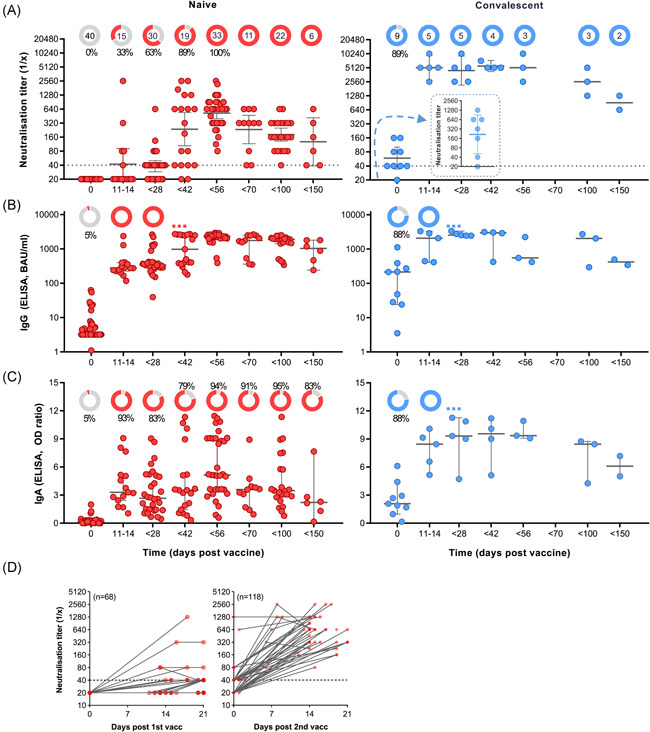Figure 1.

Fast and strong SARS‐CoV‐2 neutralisation after vaccination with BNT162b2 in convalescent persons. Two cohorts of naïve (left panel/red; n = 40) and convalescent (right/blue; n = 9) were defined based on history of COVID‐19 before first vaccination (Day 0). Secondary vaccination was done approximately 4 weeks after the first vaccine dose. Convalescent subjects received first vaccination 3–12 months after infection. (A) Reciprocal titres of SARS‐CoV‐2 neutralising antibodies measured using a tissue‐culture infection dose‐based method. The donut charts illustrate the fraction of persons with positive (red or blue) virus neutralisation at time points indicated in the figures underneath. The numbers in the donut centres indicate the number of persons analysed at the given time point. The inset (right panel) represents neutralisation titters of convalescent individuals 4–12 weeks postinfection, but before vaccination. Neutralisation titres equal or bigger than 40, as indicated by the dashed line, are considered as positive. (B) Spike (S1) protein‐specific IgG in BAU/ml as measured by ELISA. (C) Spike protein‐specific IgA in in OD‐ratio and as measured by ELISA. (D) Virus neutralisation titres of serum from naïve participants was measured as a function of time after the first (left panel) and the second (right panel) vaccination. Neutralisation data are illustrated as geometric means with 95% confidential intervals of the means, while IgG and IgA data are illustrated as medians with 95% CI. Nonparametric Kruskal–Wallis test with Dunn's test were applied to compare samples at each time point with the following one. All p values lower than 0.05 were considered statistically significant and p values >0.0001 were indicated as exact numbers. COVID‐19, coronavirus disease 2019; ELISA, enzyme‐linked immunoassay; IgA, immunoglobulin A; IgG, immunoglobulin G; SARS‐CoV‐2, severe acute respiratory syndrome coronavirus 2 [Color figure can be viewed at wileyonlinelibrary.com]
